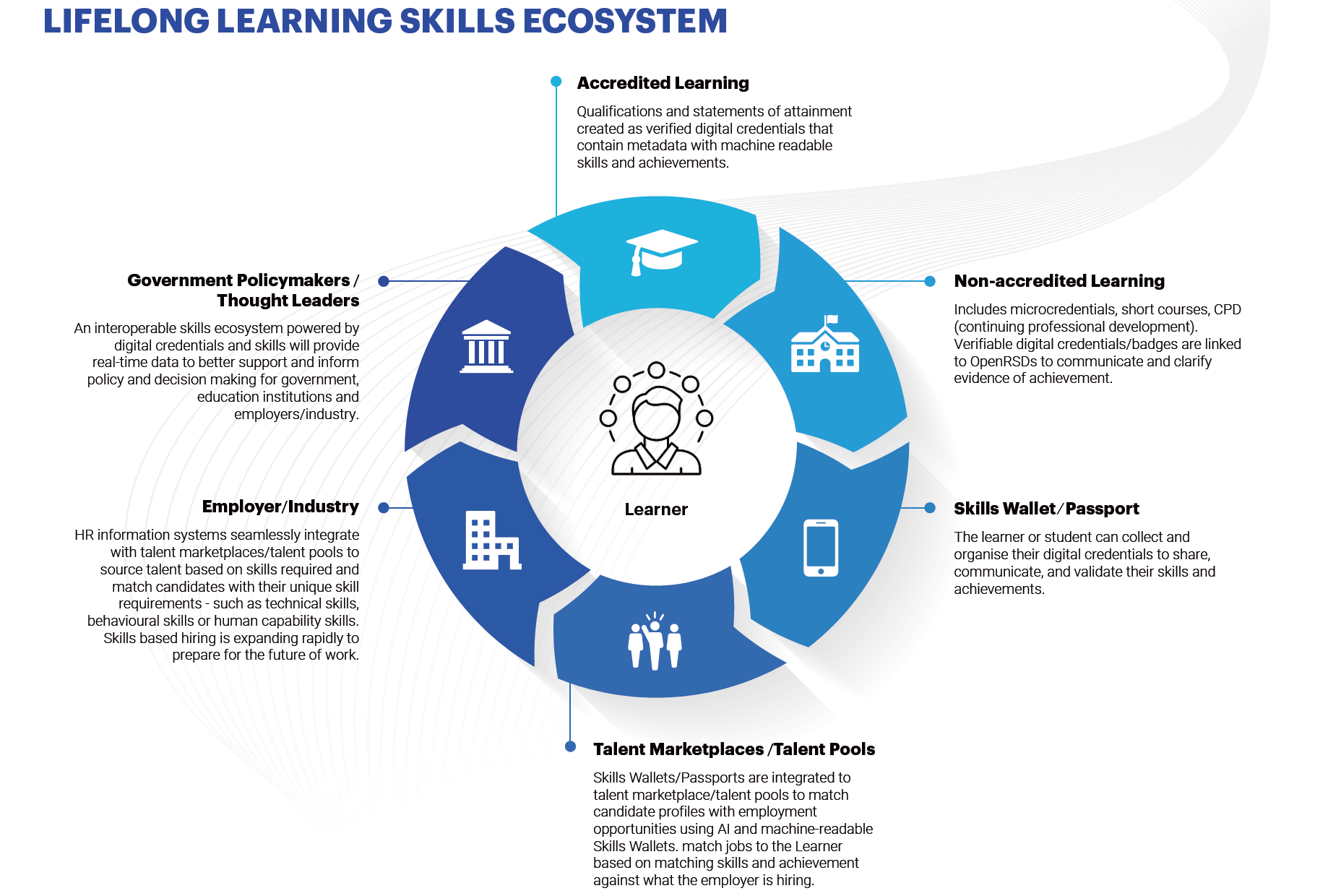In today's rapidly evolving job market, the role of interoperable technology in the skills ecosystem cannot be understated when it comes to skills-based hiring and learning. Interoperability serves as a critical bridge between the education and employment sectors, establishing a universal language for skills and achievements. This universal language facilitates effective communication and understanding of qualifications among employers, education providers, and learners.
With interoperability, data related to skills and credentials can move freely across different systems, ensuring that a digital Learner Passport, which contains both verified accredited learning (qualifications and statements of attainment) and non-accredited learning (micro-credentials/CPD/short courses), remains universally readable regardless of the platform used to view it. This transparency creates a more efficient and effective skills-based hiring process, allowing employers to easily identify the specific skills they require from an available pool of talent.
This real-time access to data on workforce skills and skills gaps also holds immense value for key stakeholders in the education sector. It provides Government with greater control and visibility to target skills shortages and evaluate funding decisions more effectively, and empowers educators to design and deliver skills-based learning experiences with greater efficiency and precision.
For example, an estimated 100,000 additional workers are needed to meet the demand in the Aged, Disability, and Mental Health Care sector in the near future. Education institutions can leverage this data to inform product and program design, not only for accredited qualifications but also for building meaningful and targeted micro-credentials to rapidly upskill or reskill workers to meet industry requirements.
Subsequently, future-proofing the credentials issued to learners becomes critically important in the successful deployment of a skilled workforce. Only digital credentials allow learners to collect and curate their achievements in Learner Passports with machine readability. These Learner Passports can then be connected to Talent Marketplaces (e.g., Seek and LinkedIn) or Talent Pools where AI and machine-based selection criteria match job requirements with the learner's skills. Through Learning Vault, this technology already exists and is being utilised in various sectors to identify talent and streamline the candidate selection process.
Embracing the power of interoperable technology, the skills ecosystem is poised to unlock a new era of seamless learning and employment, ensuring a thriving and adaptable workforce ready to meet the challenges and opportunities of the future.

